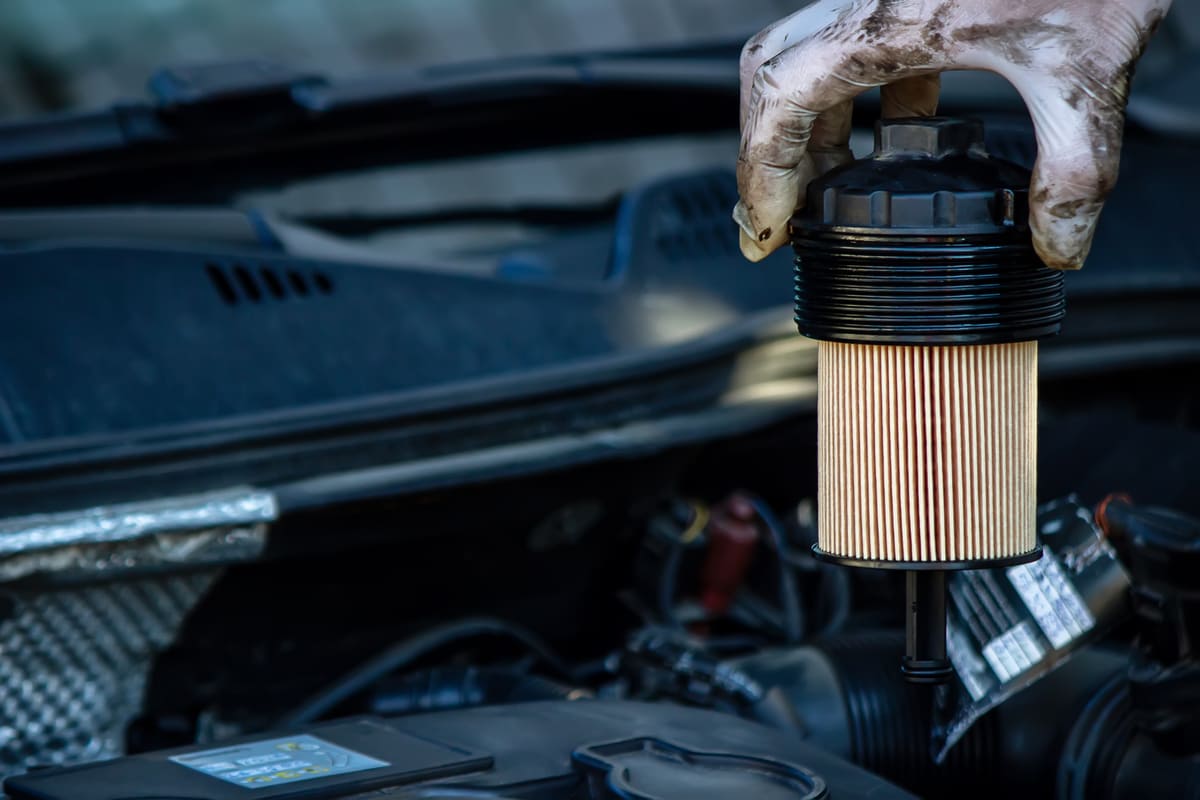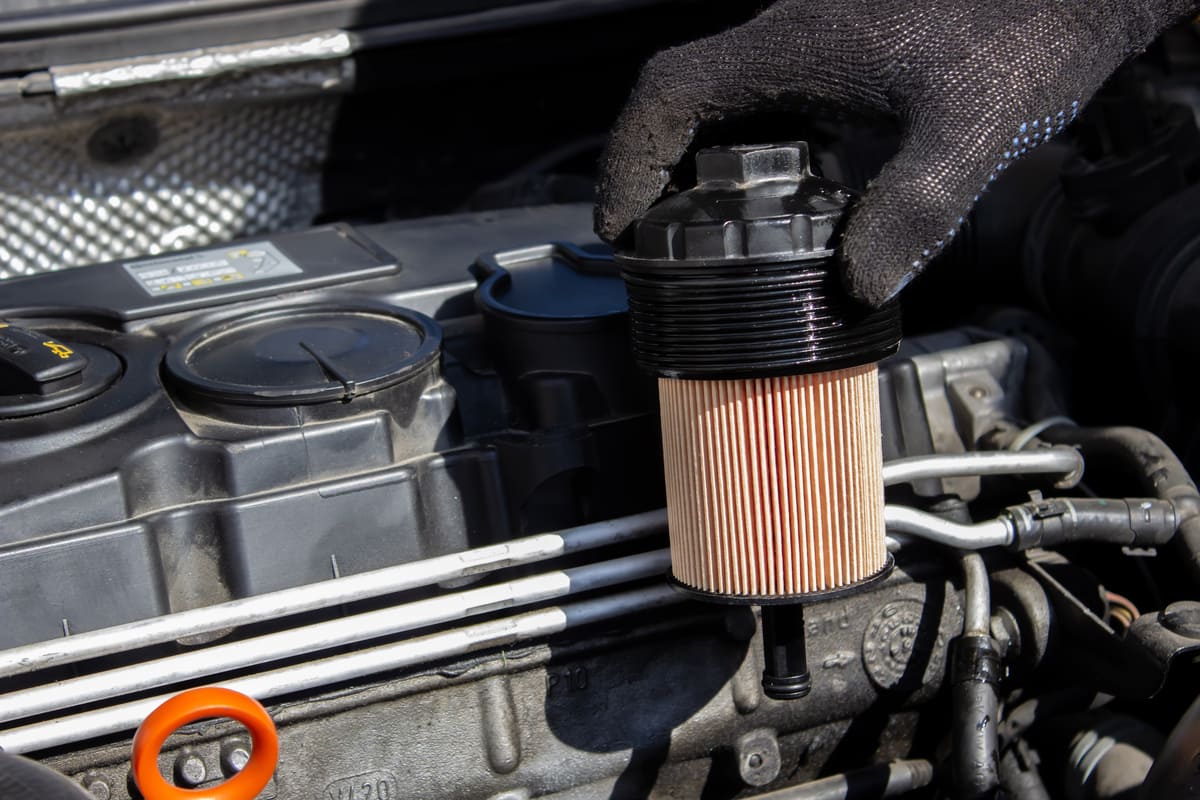The fuel filter plays a critical role in maintaining the cleanliness of a vehicle’s fuel, preventing harmful particles from causing engine damage. Regular maintenance and replacement of the fuel filter are key to ensuring smooth operation and prolonging life.
What is a Fuel Filter?
A fuel filter is a part of a vehicle that removes dirt and particles from the fuel. It stops harmful debris from reaching the engine. Clean fuel helps the engine run smoothly.
Fuel filters are usually located along the fuel line. They can be near the fuel tank or engine. Mechanics replace fuel filters during regular maintenance.
Different vehicles need different types of fuel filters. Some filters are made for gasoline engines, others for diesel engines. Regularly changing the fuel filter keeps the engine healthy and efficient. It is important to follow the car’s manual for replacement schedules.
References
- Fuel filter. Wikipedia. Retrieved from
- What Is a Fuel Filter, What Is Its Function, and How Does It Work?. Zenith Filters. Retrieved from
What are the Types of Fuel Filter in Cars?
Understanding the different types of fuel filters in cars helps ensure your engine runs smoothly and efficiently. Here’s a quick guide to the most common types of fuel filters used in vehicles.
Diesel Fuel Filter
Diesel fuel filters clean the diesel before it reaches the engine. They remove impurities like dirt and water that can damage the engine. Diesel engines need these filters because diesel fuel tends to have more contaminants than gasoline.
Inline Fuel Filter
An inline fuel filter sits along the fuel line, usually between the fuel tank and the engine. It catches debris and dirt, ensuring clean fuel reaches the engine. This type is easy to replace and commonly used in many cars.
Cartridge Fuel Filter
Cartridge fuel filters consist of a replaceable filter element inside a metal or plastic housing. Mechanics only need to change the filter element during service, making it an environmentally friendly option. These filters are efficient and widely used.
Gasoline Fuel Filter
Gasoline fuel filters remove impurities from gasoline before it enters the engine. Clean fuel helps the engine run smoothly and efficiently. These filters protect the engine from dirt, rust, and other particles.
Canister Fuel Filter
Canister fuel filters have a filter element enclosed in a sealed canister. They are sturdy and often found in high-performance vehicles. The canister design provides excellent filtration and keeps contaminants out of the fuel system.
In-Tank Fuel Filter
In-tank fuel filters are located inside the fuel tank. They filter the fuel as it leaves the tank, preventing debris from reaching the engine. These filters are typically part of the assembly and require less frequent replacement.
Pump-Outlet Fuel Filter
Pump-outlet fuel filters are installed right after the fuel pump. They ensure that the fuel reaching the engine is free of impurities. These filters provide an extra layer of protection for the engine’s fuel system.
Spin-On Fuel Filter
Spin-on fuel filters are easy to install and replace. They come as a complete unit that screws onto the fuel system. These filters are widely used due to their convenience and effectiveness in filtering out contaminants.
References
- Car Fuel Filter. Dubizzle. Retrieved from
What are the Different Components of a Fuel Filter?
Here are the key parts of the fuel filter:
- Housing: The housing is the outer cover of the fuel filter. Made from strong steel, it shields the internal components and holds pressure within the filter to prevent overflow. It’s built tough to withstand the demands of the engine’s fuel system.
- Base Plate: The base plate sits at one end of the housing and connects the filter to its mount. It helps with installation, prevents fuel leaks, and maintains filter pressure. The base plate ensures the filter stays securely attached and functions properly.
- Center Tube: The center tube prevents the filter from collapsing under pressure. It also serves as an outlet for filtered fuel. Constructed from steel, it handles different levels of filter pressure while providing structural support.
- End Cap: The end cap supports the filter media inside the housing. Using adhesive, it keeps the filter media in place, preventing leaks and ensuring the filter operates efficiently. The end cap plays a crucial role in maintaining the filter’s integrity.
- Compression Spring: The compression spring applies the necessary force to keep internal components intact under various pressures. It ensures that the filter elements remain properly aligned and functional, regardless of changes in fuel pressure.
- Filter Media: Filter media traps particles and water from the fuel. Made of cellulose or synthetic material, it offers a large surface area for filtration. This part is essential for keeping the fuel clean and ensuring the engine runs smoothly.
- Drain Valve: The drain valve allows fuel to bypass the filter media when needed. This component helps manage the flow of fuel within the filter and ensures that any excess fuel can be safely diverted without causing issues.
- Water Sensor: The water sensor detects the presence of water in the fuel. Placed in the fuel strainer, it sends signals to alert the driver if water is found. This feature helps protect the engine from potential damage caused by contaminated fuel.
- Gasket: The gasket acts as a seal between the fuel filter and the engine. Made of rubber or paper, it prevents oil leaks and ensures a tight connection. This component is vital for maintaining the efficiency and of the fuel system.
- Strainer: The strainer is the primary filtering element in the fuel filter. Made of plastic fabric, it catches particles and contaminants, keeping them out of the fuel line. The strainer ensures that only clean fuel reaches the engine.
References
- What Is a Fuel Filter in Cars?. GoDigit. Retrieved from
How Does a Fuel Filter Work?
Below is step-by-step work of the fuel filter:
Step 1: Fuel Enters the Filter
Fuel leaves the tank and travels through the fuel lines. The first stop is the fuel filter, where it begins its cleaning journey. This initial step is vital because the fuel picked up in the tank may contain various impurities.
Step 2: Passing Through the Filter Media
Inside the fuel filter, there’s a part called filter media. This material, often made of cellulose or synthetic fibers, catches dirt and impurities. Think of how a strainer catches food particles when you rinse fruits. The filter media has tiny holes that let only clean fuel pass through.
Step 3: Trapping Unwanted Particles
As fuel flows through the filter media, it traps unwanted particles like dirt, rust, and debris. These particles can come from the fuel itself or from the tank’s inner walls. By trapping these impurities, the filter prevents them from reaching and damaging the engine.
Step 4: Filtering Out Water
Some fuel filters also remove water from the fuel. Water in the fuel can cause corrosion and other serious engine problems. Special layers or materials in the filter absorb or separate the water from the fuel, ensuring that only dry, clean fuel continues on its journey.
Step 5: Exiting the Filter
After cleaning, the now-filtered fuel exits the filter. It continues through the fuel lines towards the engine, free of harmful particles. This step ensures that the fuel supplied to the engine is clean and efficient for combustion.
Step 6: Reaching the Engine
The clean fuel finally reaches the engine. With no impurities present, the engine can run smoothly and efficiently. Clean fuel helps the engine perform better, reduces wear and tear, and extends its lifespan.
References
- The Anatomy of a Fuel Filter: All You Need to Know. GoMechanic. Retrieved from https://gomechanic.in/blog/the-anatomy-of-a-fuel-filter-all-you-need-to-know/
Where is the Fuel Filter Located?
The fuel filter sits between the car’s engine and fuel tank. This important component ensures clean fuel reaches the engine.
In many cars, you’ll find the fuel filter inside the fuel tank, located at the opening of the fuel line. This design helps protect the filter and makes it part of the fuel pump assembly.
Some vehicles have a fuel filter along the fuel line that runs under the car. This placement allows easy access for maintenance and replacement.
Before you work on the fuel filter, always relieve the pressure in the fuel system to prevent accidents. You can usually do this by following your vehicle’s manual instructions.
Finding the exact location of the fuel filter may vary depending on the car model. Always check your vehicle’s manual for specific details.



